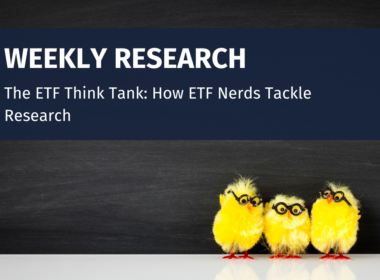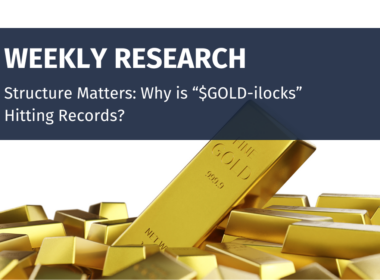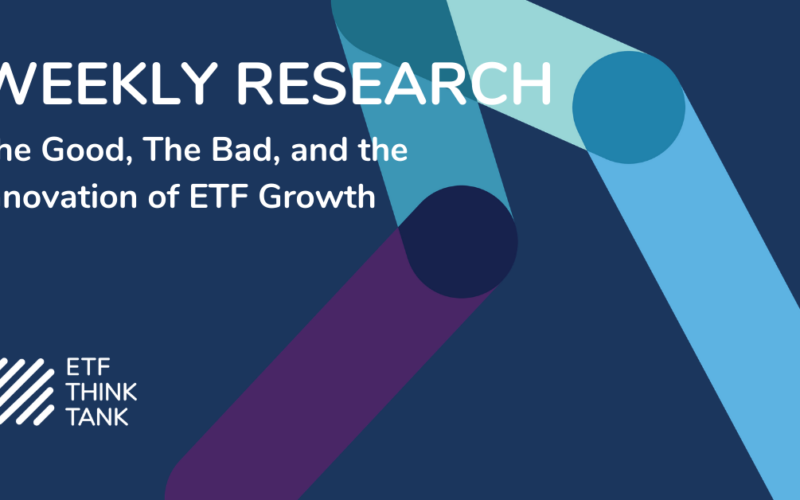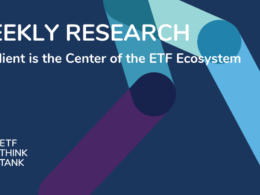ETFs are more than just about equities. They are about an investor revolution who woke up 10 years ago and said, “we want transparency, low fees, and ease of access, and by the way – tax efficiency matters as well.” ETFs are about access to strategies as solutions to market dynamics which of course includes fixed income. This is the reason why thousands of people in the future will continue to spend the time at the Inside ETFs Conference and why this week we focus on fixed income. Put simply, we expect investor and advisor interest to grow the ETF investment pizza pie and look for customized slices to become the norm. Life and markets are dynamic and investor solutions will need to adapt when markets become difficult and stale. For those who disagree, please stop reading and stick to the static 60/40 strategy, but be warned that “past performance is not indicative of future performance.”
Fixed Income Fund Flows are Going to the Wrong Place
Fund flows in fixed income ETFs over this past year were about $105 billion with about $31 billion concentrated in four short-term funds. The four winners were iShares Short Term Treasury Fund (SHV) with $12.1 Billion, iShares 1-3 Year Treasury Bond (SHY) with $7.90 Billion, SPDR Barclays 1-3 month T-Bills (BIL), and lastly JP Morgan Ultrashort Income (JPST) saw $5.26 Billion. Why were the flows so targeted at short-term fixed income?
Speculation about why 10% of the roughly $316 billion in aggregate ETF net inflows went to cash alternative is clear: (1) Money was, or still is, flux (2) Cash was stuck during the re-balance, moving out of large cap U.S. stocks and into Emerging Markets (3) Cash is an asset class that, by definition, those investors said they would be protected by. However, if you are an ETF investor, cash probably remains in the ecosystem. We have seen evidence of this over the past 3 years with the ecosystem taking in over $1 trillion in inflows on a base of $2.6 Trillion at the end of 2016.
There is $635 Billion invested in 332 ETFs traded in the U.S.; meaning 15% of the 2,182 ETFs traded in the U.S. represents about 17.5% of the total Assets Under Management (AUM). Lastly, so we don’t get to far distracted by the weeds, large issuer franchises like Blackrock, Vanguard and StateStreet dominate this area of the ETF market. The top 25 fixed income ETFs have about $432 billion in Assets Under Management (AUM) or about 67% of the total category; including the $57 billion invested in the iShares Core U.S. Aggregate Bond ETF (AGG). Why do we care?
It is known that active management and or differentiated indexes in fixed income can provide an edge. Yet over the past 5 years, more than $42.8 billion has been invested in this ETF that tracks the passive Bloomberg Barclays U.S. Aggregate Bond Index. [1]
Remember the warning by John Bogle during the now infamous interview with Morningstar’s Christine Benz where he said “I think we need to fix the index… My ultimate hope, if you will, is to have an improved let’s say all total bond market index fund for U.S. investors.” [2]
Financial professionals often warn clients “that past performance is not indicative of future results,” so why do so many take comfort in allocating capital to this index? Alternatively, they can search out active or certain rules-based models. Index back tests are always suspect, but for comparison purposes, how is the logic of past performance from a “flawed index” better than evidence from results that validate Mr. Bogle’s viewpoint? Note that the Columbia Diversified Fixed Income ETF (DIAL) follows this index which has outperformed AGG since Mr. Bogle was quoted and even since 2007 shown below. Of course, other active fixed income ETF’s such as PIMCO Total Return ETF (BOND) and the SPDR DoubleLine Total Return Tactical ETF (TOTL) also offer interesting alternative solutions.














